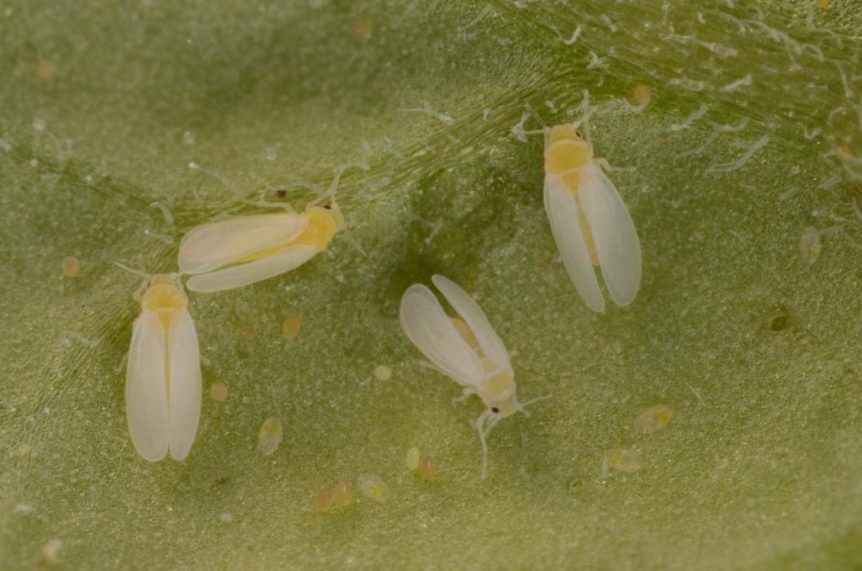
By Maegan Beatty
In the last 25 years, the number of whitefly-transmitted viruses affecting vegetable production in Florida and the southeastern United States has steadily increased. The rise in average winter temperatures, the development of widespread resistance to broad-spectrum insecticides and the absence of new varieties with resistance to the multitude of new viruses have collectively contributed to this increase. Current management strategies are having difficulty keeping pace with the evolving threat.
William Turechek is a research plant pathologist at the U.S. Department of Agriculture-Agricultural Research Service U.S. Horticultural Research Laboratory in Fort Pierce, Florida. His area of expertise is plant disease epidemiology with an emphasis on diseases that occur in vegetable and strawberry production.
Neighborhood Pest Management
Neighborhood pest management, or NPM, is a regionally scaled, coordinated reduction of a target pest to minimum levels through a community-based management strategy over a specific geographical area. NPM is different from conventional pest management in that management tactics are applied by multiple individuals over a broad area, ideally treating the entire area simultaneously. NPM is smaller in scale compared to areawide pest management and typically does not encompass the entire region where pests are problematic.
“The goal of neighborhood pest management is efficient and improved pest management, not eradication,” Turechek said.
Common whitefly-transmitted viruses include squash vein yellowing virus, cucurbit leaf crumple virus and cucurbit yellow stunting disorder.
“The sweet potato whitefly transmits all three of these viruses in either a semi-persistent or persistent manner depending on the virus,” Turechek said.
Study Support
Turechek and his team developed two field studies that identified important characteristics of epidemic development that suggest that whiteflies can be manageable through NPM. In the first study, they found that the whitefly density and cucurbit viruses are predictable with weather variables associated with extreme weather events. The second study suggested that proximity to infested or infected fields is a predictor of whitefly density.
The first study was titled the “Field of Dreams.” This study was an experimental watermelon planting where researchers allowed whiteflies and disease to progress without interference. Here, they measured the progress of the disease, collected counts of whiteflies and recorded weather data. Additionally, a simple model was developed to forecast epidemic development relative to whitefly density and weather events.
Both studies also showed that if an area was high in whitefly density, then the areas surrounding them were likely going to be infested.
“If one group has a whitefly problem, any group within its orbit or circle will likely share that problem,” Turechek said. “This is why growers should share their information, so that they may act together on their shared problem.”
There’s an App for That
The three Florida counties that are at the most risk for whiteflies are Lee, Hendry and Collier. While it is difficult to get every single grower in these counties to work together simultaneously, it is important to understand and utilize the circle of influence. Turechek encourages growers to utilize Farm Dog Scout (FarmDog.ag) program. Farmers can enter their data regarding their pests, and the entire community and surrounding areas will be alerted about the pest. These alerts can be daily, weekly, monthly or whatever a grower decides.
Sharing data between growers in the neighborhood is crucial to successful pest management in Florida. Farm Dog Scout can be used as a mobile app to collect and receive data. There are other programs like Farm Dog Scout that growers can utilize.
Another strategy that farmers can implement is the use of detector dogs (K-9s). These dogs can be used to detect plant viruses for growers. Detector dogs would ideally be used before planting to reduce future harm to the crops.
Conclusion
It is possible to predict the severity of some whitefly-transmitted viruses and whitefly density with weather variables associated with extreme weather events. Additionally, proximity to infested and/or infected fields is the most useful pest predictor. Based on these conclusions, an NPM program may be one of the better options for managing viral epidemics.
Maegan Beatty is an AgNet Media intern.










